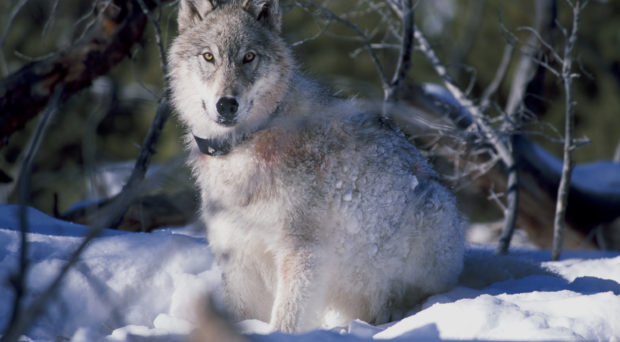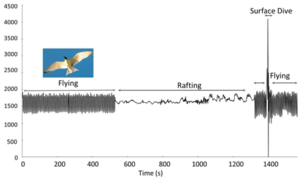
Biologgers or smart tags – that remotely collect and record biological data using automated sensors – have become an increasingly important tool in biologists’ kit. Advances in the miniaturization of hardware, extended battery life, and quality of software methods have led to a plethora of research, with seemingly endless applications in biological science, spanning environmental science, conservation, evolution and behavior.
Why are remote sensors so appealing?
Traditionally, scientists would need to brave extreme conditions and harsh terrains to collect samples and record data in person. Tracking of free-ranging animals was largely restricted to large mammals, relying on radio transmitters operating within a close-range and researchers would be constrained by distance and time. Remote sensors can collect data without the presence of a researcher and have extended the range of research topics that can be studied, enabling us to ‘visit’ habitats previously unreachable. They are considered less invasive or intrusive to ecosystems and thus they can also provide insight into natural behaviors of animals which may be suppressed in the presence of humans.
Remote sensors are transforming how biologists collect data, pushing the boundaries of our understanding about remote landscapes, and how wild animals behave.
Remote robots
Remotely operated vehicles (ROVs), controlled by radio or cable connection, are deployed underwater or across land, air (drones) or space. ROVs are particularly valuable where the site of interest is challenging to access or even unreachable, or it is vast or requires extensive and lengthy data collection. ROVs can carry sensors, cameras and mechanical arms which can survey landscapes or habitat use or collect biological data including specimens. As an example, a ROV was used to record the presence of giant Larvacean species (a type of free-swimming tunicate) in the northeast Pacific Ocean.
Remote sensing robots can be used to monitor a range of environmental variables, including air temperature, rainfall, humidity or sunlight. These can assess land usage, conservation including impact of deforestation and climate change on landscapes. For example, model changes in land use, including urban sprawl or to monitor air pollution.
Animals as data collectors
Biologgers with a range of sensors can be attached to animals, such that information can be simultaneously collected from the environment, such as light, air/water pressure, external temperature, relative humidity and magnetic field, and the animal, including surface body temperature, heart rate and movement and behavior. Accelerometers have been used to quantify body posture and motion for a range of species moving in different environments, including diving and flight behavior patterns. Waveforms can be created to easily distinguish different behaviors (Figure 1).

So how are these little tags attached?
Such a wealth of data collected in one small tag! Biologgers can support more complex studies of animal movement, behavior, physiology and interaction with the environment. Accelerometers have been adapted for attachment in over 100 species from king scallops and cane toads to brown bears and sperm whales (reviewed in Walker et al 2015).
Attachment methods include neck collars, leg bracelets, fabric harnesses, clamp, dart or glue. This depends on the morphology of the study species and the level of movement detail needed. For example, the fine-movements involved in feeding behaviors require a neck tag. Some tags can be deployed inside the body cavity of the animal, and these can record physiological measures such as heart rate, movements of smooth muscle during digestion, though they require surgical procedures for tag retrieval.
Researchers are constantly evolving smart tags for use in smaller animals, and importantly, to minimize the invasiveness and animal welfare implications of tag attachment, such as the use of non-invasive clamps in white sharks.
Remote science applications are not limited to just free-roaming animals; remote sensing technology can be used to measure motor activity and time budgets of captive animals, such as elephants in zoos, and even pets. Capturing data remotely in these animals could provide real-time assessment of welfare, including exploring the relationships between movement and pain.
There are, however, important considerations about the negative effects of attaching tags to animals, especially smaller species since there may be an increased burden on energy expenditure, or an increased risk of injury or predation. One study in birds looked at such consequences including non-return to breeding site, nest success and leg injuries.
The future of roboscience in biology?
As the technology advances and is validated as a research tool in more species, remote sensors could be used to answer more complex questions pertaining to animals and their environment. For example, biologgers could be used to measure energetics or biomechanics of animal movements or more complex animal behaviors, including social interactions (read more here)
Remote sensing can be extended from the study of individual animals or localized groups, to larger samples of intra- and inter-species interactions which can measure patterns of population distribution important for animal and habitat conservation efforts. For example, Kittle et al 2016, compared the distributions of predators (African lion), competitors (spotted hyena) and prey (wildebeest) in western Serengeti.
In summary, remote sensing technologies and their modification for biological data collection is probably one of the most powerful techniques of the early 21st century, offering the opportunity to answer some of the most important questions in zoology, ecology and environmental sciences.
Emma Buckland
Latest posts by Emma Buckland (see all)
- Rise of the RoboScientist – applications of remote sensing in Biology - 10th October 2016
Comments